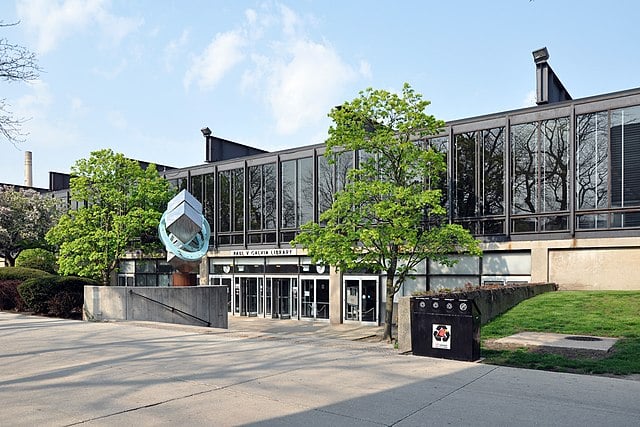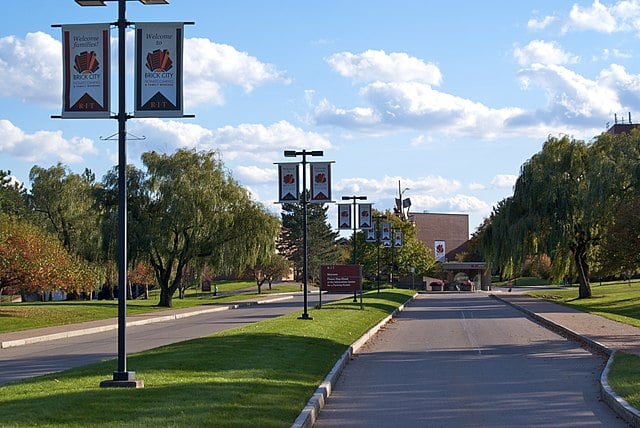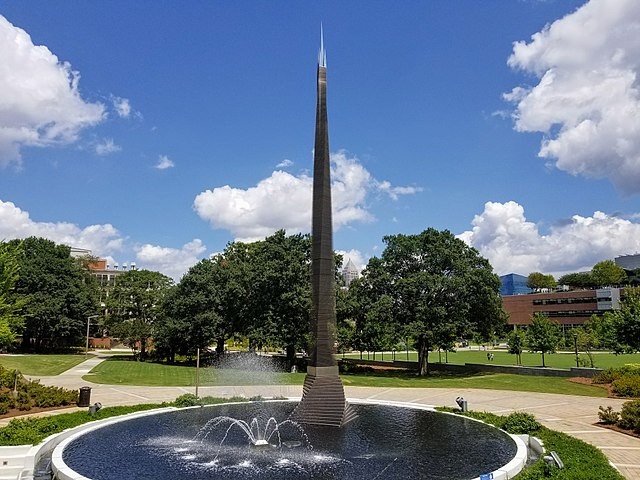There has never been a better time for a technology education than right now.
Computing, engineering, medicine, big data, management, entrepreneurship — these fields have an insatiable demand in today’s markets.
You might think that institutions of higher learning would struggle to keep up with how fast modern technology is growing, but the best technology colleges make it a point to tackle today’s biggest problems head-on.
How does a school become the “best” in technology?
For starters, it highlights a world-class faculty, up-to-date equipment, intense STEM research, and hands-on learning. All 10 of the following schools have these and more, allowing students to pursue their unique interests and ambitions to the fullest.
A career in technology is as rewarding as it is competitive, so it’s no surprise that tech folks earn some of the world’s highest salaries.
This ranking is based on each technology or polytechnic institute’s position in the U.S. News 2021 Best National Universities list.
So without further ado, here are the 10 best technology colleges, or institutes of technology & polytechnic universities, in the US.
10. Illinois Institute of Technology (Chicago, IL)

Today Illinois Tech students tackle hands-on research in robotics, big data, urban sustainability, medicine, and computer science.
In fact, the U.S. Department of Homeland Security and the National Security Agency (NSA) designated the school as a National Center of Academic Excellence in Cyber Defense Education, due to the College of Computing’s extensive programs in cybersecurity and digital forensics.
Illinois Tech computer science professor Kai Shu won awards for his research on fake news. He developed an algorithm called dEFEND, which helps predict and explain disinformation.
Computer science isn’t the only field where IIT excels.
Virgil Abloh, artistic director of Louis Vuitton’s menswear collection and founder of fashion line Off-White, earned his Master of Architecture from the institute in 2006. Jack Steinberger won the 1988 Nobel Prize in Physics with two others for his work on neutrino beams.
9. New Jersey Institute of Technology (Newark, NJ)

Forbes ranks the New Jersey Institute of Technology as the #1 college where the highest percentage of students come from the bottom fifth of income distribution but end up in the top fifth later in their careers.
It’s no surprise that students become so successful after getting a degree at NJIT. The public institute’s multi-million dollar Makerspace allows students to create and test their own products with state-of-the-art industrial tools. Students can 3D-print prototypes, digitize real objects, and more, taking the hands-on approach to the next level.
The NJIT Center for Solar-Terrestrial Research is a world leader in the field. Other major R&D areas include applied mathematics, materials science, and biomedical engineering.
Prominent alumni include Judea Pearl, winner of the 2011 Nobel Prize of Computing for his AI work, and astronaut Wally Schirra, the only person to fly in all three of America’s first three space missions.
8. Rochester Institute of Technology (Rochester, NY)

If you want to study computer science, engineering, or information technology, Rochester Institute of Technology is the place for you.
Especially if you identify as deaf or hard of hearing — RIT’s National Technical Institute for the Deaf educates over 1,000 such students every year.
All RIT students have access to cooperative education, a full-time, paid program where students get real work experience as they complete their degree. Co-op employers include Apple, Amazon, Google, Facebook, Tesla, Microsoft, Lockheed Martin, and thousands more.
A team of RIT students recently won the 2021 Collegiate Penetration Testing Competition (CPTC), beating Stanford University and California State Polytechnic University, Pomona. The CPTC is an international competition that tests participants’ hacking skills.
RIT alumni become CEOs, politicians, Pulitzer Prize winners, and pioneers in their field. One example is engineer Kate Gleason, who helped pave the way for other women in the field around the turn of the twentieth century.
7. Stevens Institute of Technology (Hoboken, NJ)

For their class of 2020, 95% of Stevens’ students found competitive employment or graduate school positions within six months of graduating, the stat virtually unchanged from the year before.
Plus, the $77,000 average starting salary shattered records in 2020. It’s no wonder Stevens is also a top-ranked school for best return on investment, according to PayScale.
This speaks to the timelessness and rigor of a Stevens education, which boasts small class sizes and student-driven learning.
In fact, undergrad seniors take part in the annual “Senior Design Day,” where competitors present research and business ideas to a panel of established entrepreneurs, CEOs, and venture capitalists. Big companies like L’Oreal, Disney, and Johnson & Johnson have all tapped seniors to help innovate.
The spirit of entrepreneurship defines many Stevens alumni: Charles Stewart Mott co-founded General Motors, Eugene McDermott co-founded Texas Instruments, and Alfred Fielding co-invented Bubble Wrap.
6. Virginia Tech (Blacksburg, VA)

As a renowned land-grant university, Virginia Tech integrates technology across all disciplines and continues to innovate today.
Torgersen Hall comes equipped with high-tech auditoriums, virtual reality simulators, and state-of-the-art research spaces. The hall is connected to the university’s library, a physical bridge between knowledge of old and new.
To support its student football team and the sport at large, the Virginia Tech Helmet Lab has been studying head impacts since 2003. Their research has resulted in ratings for helmet safety that allow players to assess risk of concussion more transparently before purchasing a helmet.
Virginia Tech has produced not only professional athletes and decorated military personnel, but also those that went on to careers in tech, including astronaut Roger K. Crouch and Boeing President and CEO Dave Calhoun.
5. Worcester Polytechnic Institute (Worcester, MA)

A top engineering school, Worcester Polytechnic Institute is famous for its unique “WPI Plan,” a project-based learning style that not only teaches students technical knowledge but also how to make them better learners. The plan pushes students to develop soft skills and realize their impact in their community and beyond.
In fact, the generous Global Projects Program sends more engineering students abroad than any other U.S. university.
Such hands-on and cross-cultural learning has produced prolific alumni over the years.
Inventor Elwood Haynes was instrumental in developing the first automobile as well as stainless steel.
Biologist and WPI professor David Adams was the first person to replicate Alzheimer’s disease in a lab mouse.
Entrepreneur Naveen Selvadurai co-founded social networking platform Foursquare.
Thanks to the wildly successful WPI Plan, the institute will undoubtedly continue to produce brilliant innovators in the future.
4. Rensselaer Polytechnic Institute (Troy, NY)

Rensselaer Polytechnic Institute’s motto, “Knowledge and Thoroughness,” is certainly apt. As the oldest polytechnic university in the English-speaking world, Rensselaer is the example that many American colleges have followed.
Undergraduate and graduate students alike are heavily involved in driving research at Rensselaer. Its top six research priorities are biotechnology, energy and the environment, nanotechnology, computer and information technology, and media and the arts.
The school’s Center for Computational Innovations houses the most powerful private-university based supercomputer in the world. The center itself is driven by a $100 million collaboration with the institute, IBM, and New York State.
Rensselaer alumni have pioneered the transcontinental railroad, created the first commercial television, and invented the digital camera. They have won Pulitzer Prizes, National Medals of Technology, and Fulbright Scholarships.
3. Georgia Technology Institute (Atlanta, GA)

Georgia Tech is a hidden gem of sorts. It has all the rigor and prestige of an MIT while maintaining a friendly learning environment.
Consistently top-rated in engineering and computer science, the school sits in Midtown Atlanta, near the city’s growing movie production hub, which one PhD student got to experience for herself.
De’Aira Bryant was chosen to program a robot for the 2020 HBO Max film Superintelligence, starring Melissa McCarthy. The robot, nicknamed Cookie, performed communicative gestures as it interacted with other characters.
There are unique opportunities like this for students in all fields of study at Georgia Tech, which prides itself on its rigorous research culture.
Former president Jimmy Carter is perhaps Georgia Tech’s highest-profile alumni.
2. California Institute of Technology (Pasadena, CA)

CalTech is one of the few U.S. universities that primarily studies STEM subjects. Thus scholars and administrators can focus more effort and resources on major endeavors like NASA’s Jet Propulsion Laboratory (JPL).
JPL is a world-renowned research center whose current projects include the Mars Curiosity rover, the Mars Reconnaissance Orbiter, and Jupiter-orbiting spacecraft Juno. The lab is also responsible for helping develop FINDER, a tool to assist first responders in locating people trapped under debris.
Almost 90% of undergrads complete at least one research project by graduation. The most popular program is the Summer Undergraduate Research Fellowship (SURF), where students work with faculty mentors to develop and complete funded research projects over a 10-week period.
Visiting professors have included Albert Einstein and Stephen Hawking. Alumni are no less impressive: scientist Linus Pauling discovered the cause of sickle cell anemia, determined the structure of proteins, and figured out the nature of chemical bonds.
1. Massachusetts Institute of Technology (Cambridge, MA)

A well-known rival of CalTech, MIT is the top U.S. university for an education in technology.
Admission is highly selective (6.7%), but those who make the cut can take advantage of world-class research opportunities, faculty, and resources.
One group, the Abdul Latif Jameel Poverty Action Lab (J-PAL), conducts crucial research on widening wealth gaps due to the pandemic. For example, the lab is currently studying the impact of disease on women’s employment in Pakistan. Their findings will help inform local policies and affect meaningful change.
It was at MIT that Robert Weinberg discovered the first human cancer gene, the oncogene ras.
Not counting Tony Stark, a few famous MIT graduates include Apollo 11 astronaut Buzz Aldrin, former UN Secretary General Kofi Annan, and Salman Khan, founder of Khan Academy.
MIT is consistently on the cutting edge of today’s problems and tomorrow’s solutions, cementing its place in the number one spot.














